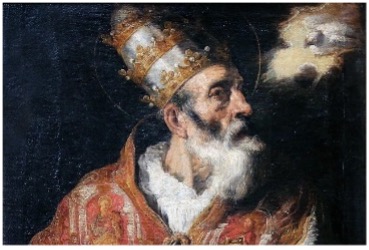The Eucharist, which means “thanksgiving”, contains the whole spiritual treasure of the Church. It is the source of the Church’s life, the unity of the whole Church. This is why the Eucharist is a redemptive force for the Church and the world, with some 415,000 Masses celebrated every day, or 5 Masses every second.
It is a well-established tradition in the Church that the faithful, guided by a sense of faith and charity, bring to the Eucharistic sacrifice a certain personal sacrifice in order to participate more closely in it. Indeed, by giving their personal offering (their own life, work, possessions, creation), they take part in the offering that the Son makes to his Father.
Through their offerings (financial or in kind), the faithful do not buy God’s benevolence – it is definitively ours in Jesus – nor do they pay for the mass, for its price is infinite.
By making an offering in conjunction with a request to celebrate Mass, whether for the living or the deceased, the faithful become more closely associated with the mystery of the Eucharist. It’s also a way of participating in the daily mission of the Church and in the sustenance of the Church’s ministers. It’s also a gesture of sharing and solidarity.
Church Tradition offers us three possibilities for Masses:

“I am the living bread that came down from heaven. If anyone eats of this bread, he will live forever.
(John 6:51)
To celebrate Mass is to believe in the power of Love that Christ manifests in the Mystery of his Cross and Resurrection. The Eucharist is that same Mystery celebrated in every time and place.
Mass is always celebrated for all, but it is traditional in the Church to add a special intention for which the priest celebrates the Eucharist.
Asking for a mass to be celebrated means entering into the prayer of Jesus and the Church, and entrusting to God’s love a particular intention that is dear to us.

“When the bread was broken, their eyes were opened and the disciples on the road to Emmaus recognized him.
(Luke 24:31)
For nine consecutive days, Mass is celebrated according to the requested intention.
Like all prayer novenas, this tradition is inspired by the nine days between the Ascension and Pentecost. In the Acts of the Apostles (1:14), we see Jesus’ disciples praying with the Virgin Mary. For nine days, the Church waits, prays and implores God for the gift of the Spirit promised by Christ.
Entrusting a prayer intention for nine Masses expresses the intensity of our particular request. The Eucharist is the source of all grace and good.
This novena will be celebrated promptly by an Oblate priest or a missionary priest in urgent need.
It’s a gesture of charity.

“It is my Father’s will that everyone who sees the Son and believes in him should have eternal life.
(John 6, 39)
The celebration of the Trentain is a custom that dates back to the end of the 6th century : 30 consecutive masses for the suffrages of a single deceased person. Pope Saint Gregory the Great, before becoming Pope, was Abbot of the Abbey of Saint Andrew in Rome. One of his monks, Justus, a good doctor and religious, died, and three gold coins were found in his cell.
In those days, discipline was harsh and demanding: the monk was thrown into a public pit with his three coins, saying : “May your money go with you to perdition.”
The Abbot mercifully had mass celebrated for thirty days for the deliverance of the unfortunate monk Justus. At the end of the thirty days, the monk appeared to one of his brothers and announced that he had been delivered and was now in the glory of Heaven thanks to these masses.
The Lord then promised St. Gregory that all those for whom thirty consecutive masses were celebrated would receive the same grace of deliverance.
This “Gregorian” will be celebrated promptly by a priest-oblate or missionary priest with urgent needs to support him in his Church mission.
So it’s also a gesture of charity.
Celebrating a Trentain for a deceased loved one means entrusting them to God’s mercy, manifested in the Eucharist.
In 3 steps, how can you support your sanctuary through mass offerings?
By clicking here ” I would like to contribute to the Eucharist ” you will be directed to a Société Générale page [SogeCommerce] where you can send us your personal details, the amount of the proposed offering (one mass, novena, thirtieth) as well as a message you would like to send us, including the intention that the priest will carry in his priestly heart.
By clicking on VALIDATE, another page is displayed for “Pre-payment verification”.
By clicking on CONFIRM, a final page allows you to make your payment/offer by credit card and to VALIDATE.
When you validate, you’ll receive a summary of your offering by e-mail, and we’ll also be informed of your wishes and expectations.
Your support helps us to continue the various activities of this place of sanctuary.
Candles burn ceaselessly, symbolizing our prayers and thanksgiving for our lives to become light.
Saint Rita, patron saint of lost causes, welcomes your intentions and thanks, and may fraternal charity strengthen our prayer.